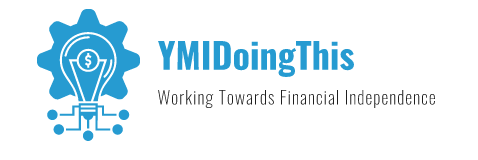
Homeownership was once considered a fundamental benchmark of the American dream. For many, that dream has been falling farther and farther out of reach as housing prices continue to skyrocket around the country. What once was a milestone of young families around the nation is now a pipedream for many in the working and middle classes. But, how much exactly is a down payment for a house in the United States. Well, as of January 2025, the median down payment on a home in the United States was a whopping $54,310. This number represents approximately 15% (the standard minimum down payment) of the median home purchase price of $362,000 . This marks a 10.8% increase from the previous year, indicating a trend toward larger upfront payments.
It’s important to note that down payment amounts can vary significantly based on location, loan type, and buyer qualifications. For instance, first-time homebuyers might opt for loans requiring as little as 3.5% down, while others may choose to put down 20% or more to avoid private mortgage insurance (PMI).
Housing Prices Over the Last 50 Years
The U.S. housing market has experienced substantial growth over the past five decades. In the early 1970s, the average home price was approximately $25,000. This means most of our grandparents would be able to purchase two homes outright for the cost of merely the down payment on a single home today. Furthermore, wages have stagnated for the last 30 or so years in that time and those rising housing costs have coincided with ballooning prices in education, healthcare, and childcare. Fast forward to 2025, and the average sales price of houses sold in the U.S. has risen to over $500,000, reflecting a twentyfold increase.
Several factors have contributed to this surge, including inflation, increased demand, limited housing supply, and changes in interest rates. While homeownership remains a cornerstone of the American Dream, escalating prices have made it more challenging for many to enter the market.
Cheapest and Most Expensive Housing Markets
Most Expensive States:
- Hawaii – Average home price: $840,256
- California – Average home price: $784,840
- New York – Average home price: $763,358
- Massachusetts – Average home price: $628,654
- Washington – Average home price: $596,514
High housing prices have been one of the primary contributing factors to Hawaii being listed as the most expensive state in the nation.
Least Expensive States:
- West Virginia – Average home price: $165,830
- Alabama – Average home price: $175,900
- Mississippi – Average home price: $180,452
- Arkansas – Average home price: $207,880
- Louisiana – Average home price: $208,100
These disparities highlight the importance of location in real estate, with coastal and urban areas generally commanding higher prices compared to rural and southern regions. While low housing costs aren’t everything, they certainly are a large part of most people’s primary expenses and a large part of why Mississippi ended up the cheapest state to live in the U.S.
Factors Contributing to Rising Housing Costs
Several interconnected factors have driven up housing prices and, consequently, down payments:
- Lack of New Housing Construction:
Many states face challenges in expanding their housing supply due to restrictive zoning laws, lengthy permitting processes, and environmental regulations. For example, New York received an “F” grade in a national housing report card, indicating significant issues with affordability and insufficient residential construction. - Large Corporate and Overseas Buyers:
Institutional investors and foreign buyers have increasingly entered the U.S. housing market, purchasing properties for investment purposes. This trend can drive up prices, particularly in desirable urban areas, making it more difficult for individual buyers to compete. - Lack of Government Intervention to Curb Prices:
While some government policies aim to assist homebuyers, others may inadvertently exacerbate affordability issues. For instance, tariffs on imported construction materials, such as Canadian lumber, have increased building costs by approximately $10,900 per new home, further straining the housing market.
Conclusion
The average down payment for a home in the United States has risen in tandem with housing prices, reflecting broader economic trends and market dynamics. Understanding these factors is crucial for prospective buyers navigating the complex real estate landscape. By staying informed and exploring various financing options, individuals can make more strategic decisions on their path to homeownership.
